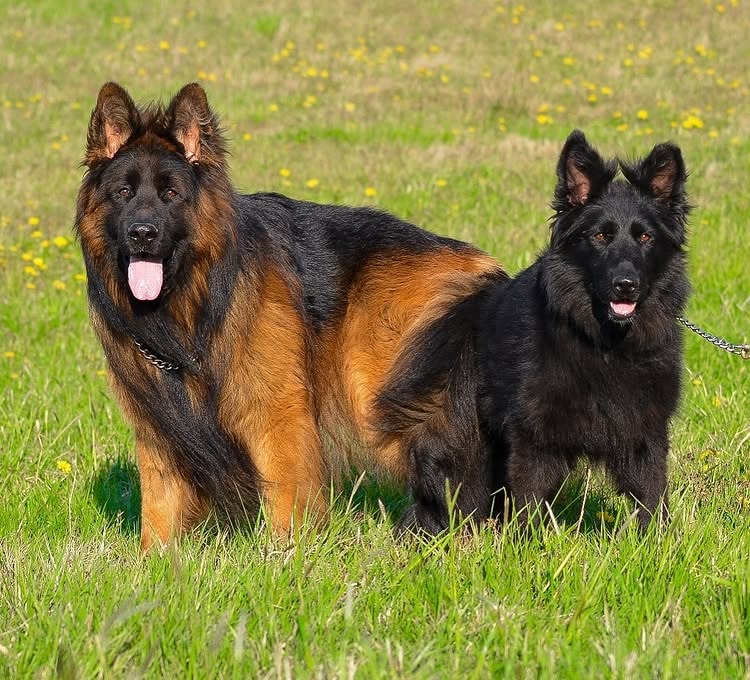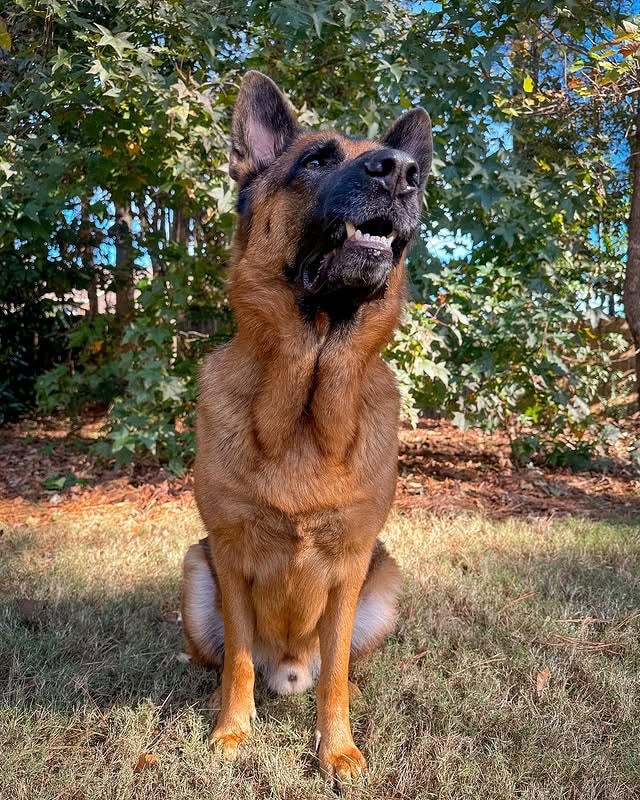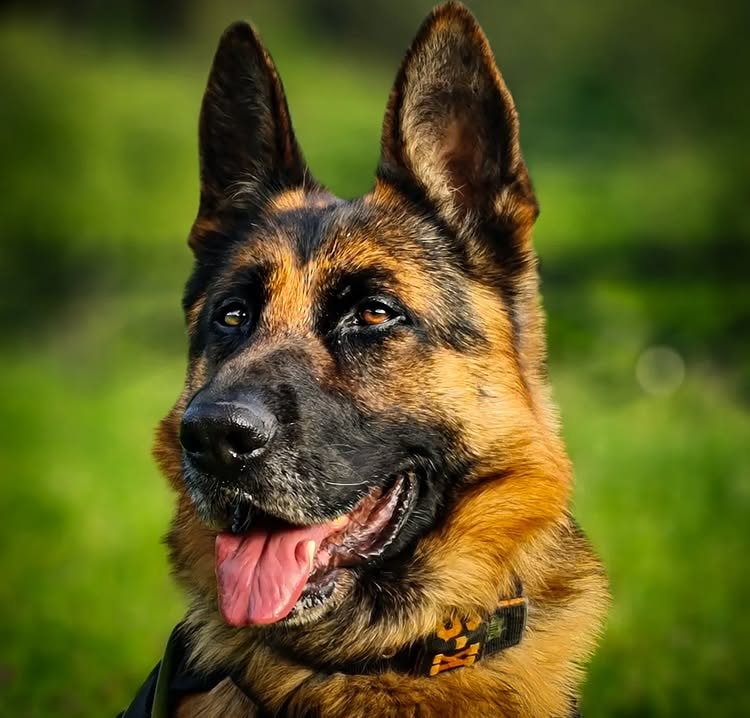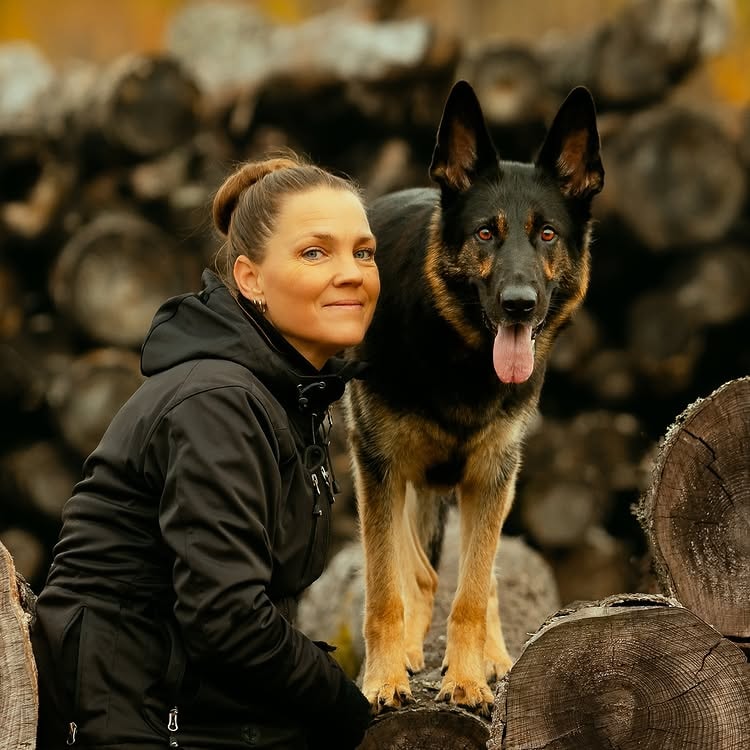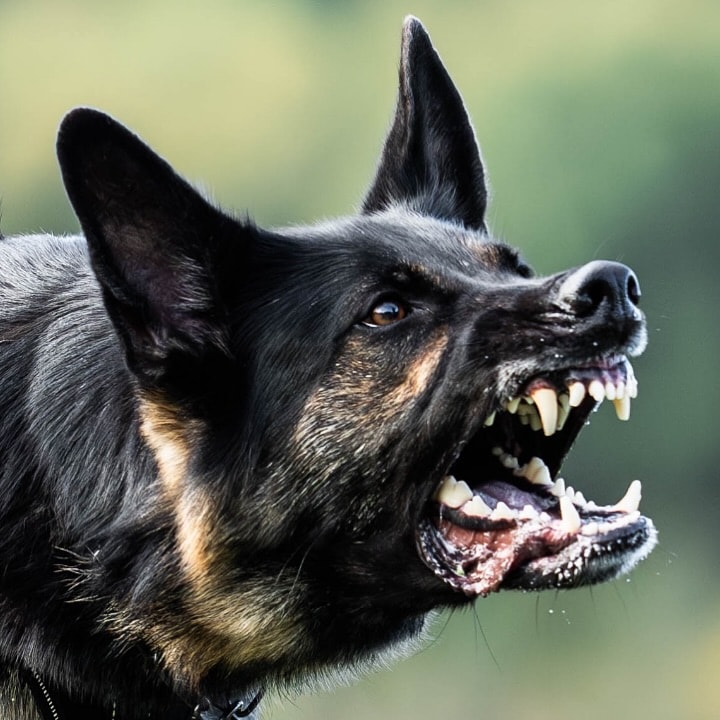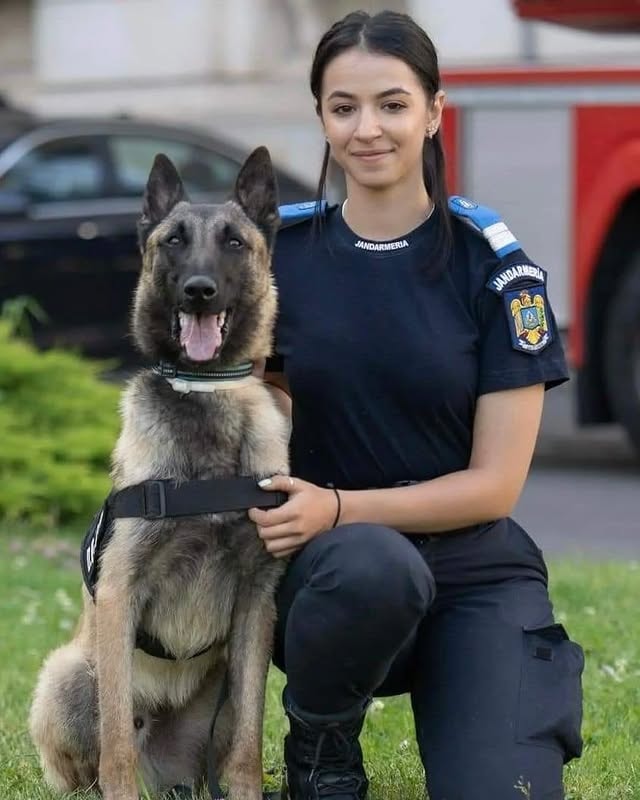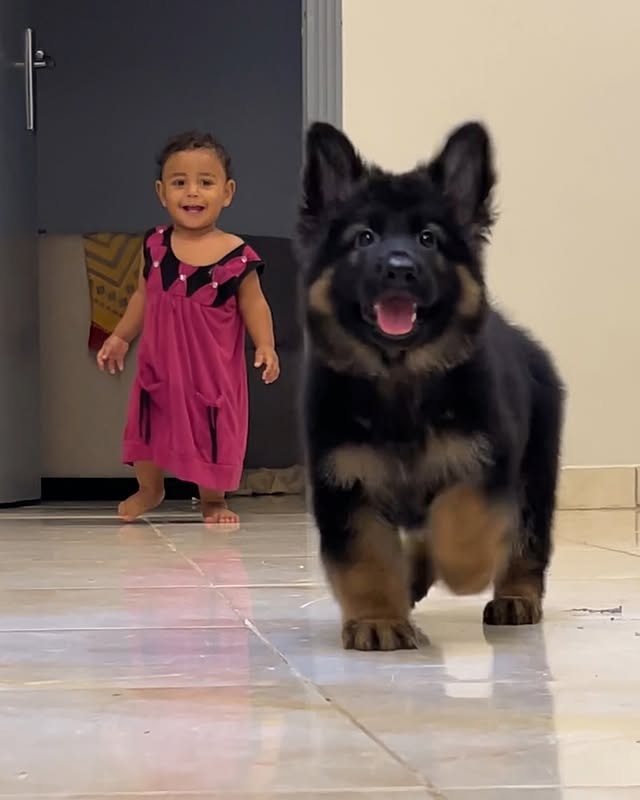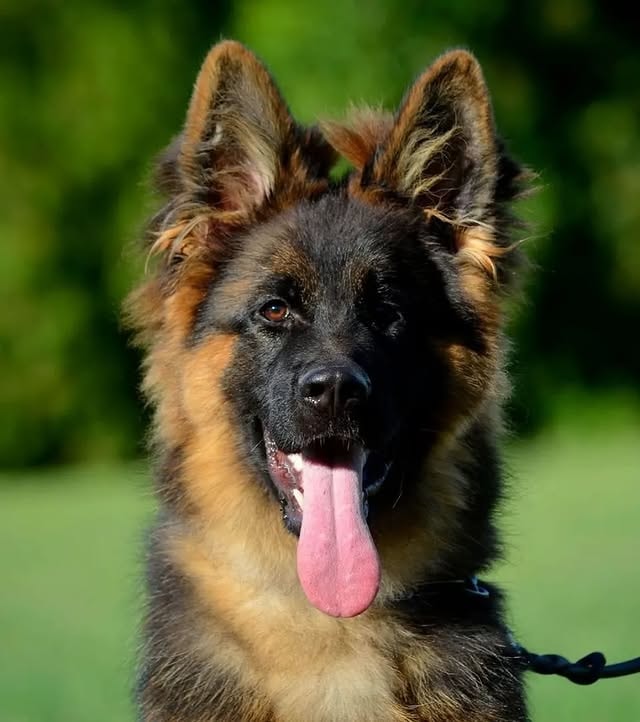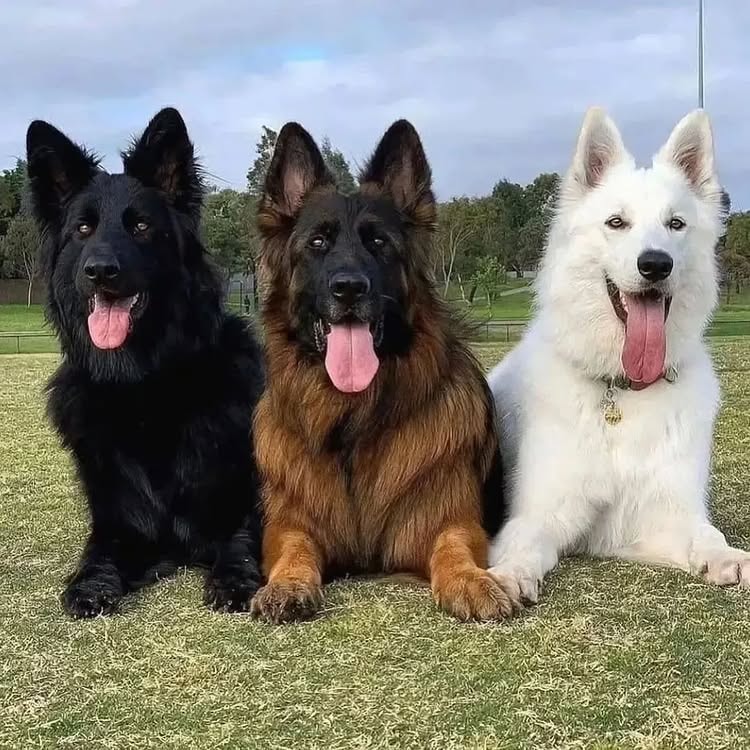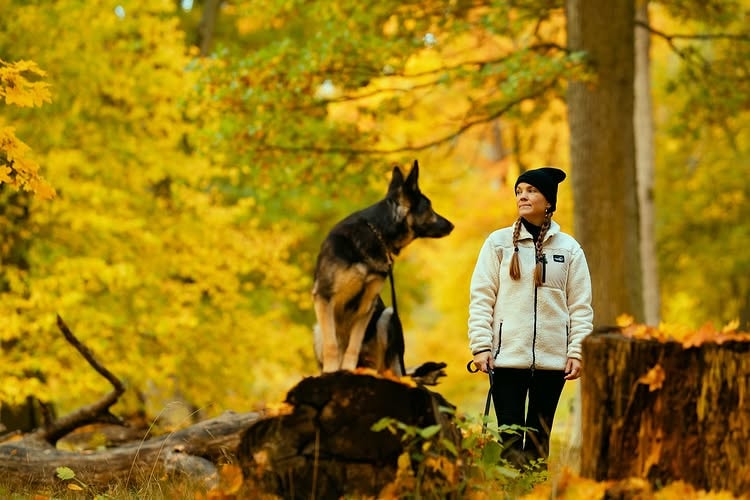The Rottweiler is a dog breed that often garners immediate attention—both due to its imposing appearance and its reputation for being fiercely loyal and effective as a working dog. However, there’s much more to this rottweiler breed info than what meets the eye.
Strong, robust, and remarkably versatile, Rottweilers are not just purebred dogs suitable for work but can also become wonderful companions for the right pet parents. Their blend of intelligence, endurance, and physical power makes them an excellent match for various dog sports, showcasing just how well-rounded they can be.
These Rottweiler dogs, or “rotts” or “rottie” as some affectionately call them, have characteristics that are both intriguing and endearing. If you’re interested in reputable rottweiler breeders or simply want to learn more, you’ll discover a rottweiler personality that, when properly trained, makes them one of the most admired breeds in several regions around the world.
Whether you’re intrigued by rottweiler puppies or contemplating adopting an adult dog, this guide will take you through what makes this breed truly special. From rottweiler training techniques to how rottweiler coats tend to develop, we will delve into all aspects that distinguish this incredible breed. We’ll also glance at a dog’s diet suitable for Rottweilers to ensure they stay healthy.
Rottweiler Puppies – Their Breed Group and Rottweiler Temperament
Rottweilers are classified under the Working Group—a reputable breeder category of dogs traditionally associated with tasks like guarding property, pulling sleds, and serving as police dogs. This popular dog breed exemplifies versatility when it comes to the wide range of tasks they can master.
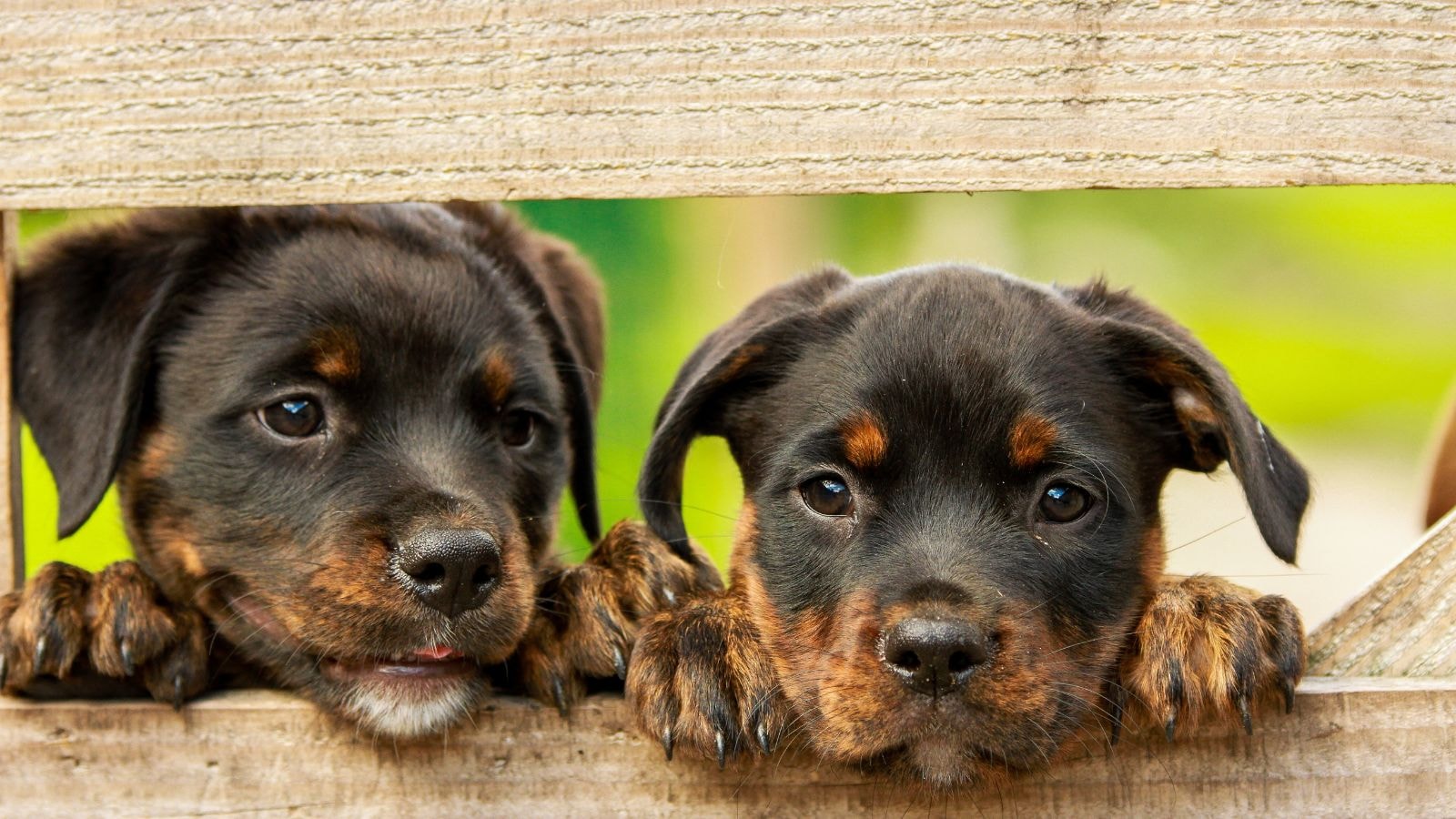
The breed’s physical stamina, combined with sharp perception, renders them highly effective in complex tasks. Among other dog breeds, Rottweilers truly stand out. They have thrived as herding dogs, excelled in police work, and aided in suspect apprehension or search operations. Their capability even extends to bomb detection, making them indispensable in many roles.
Yet, don’t let their professional demeanor overshadow their home-loving nature. When it comes to family, the Rottweiler’s temperament can be delightfully gentle and loving. Whether taking walks in dog parks or simply relaxing at home, these dogs have been known to get along well with family members—and can even live harmoniously alongside a doberman pinscher if introduced properly.
Given Rottweilers’ extensive skill sets, they fill roles ranging from cherished family companions to disciplined service animals. These active dogs can thrive in numerous scenarios, proving they are not limited to a singular function. Proper socialization and guidance help them mesh into different households, making them ideal for both experienced and first-time pet owners.
Common Characteristics of the Rottweiler (Rottweiler Temperament Insights)
If you’ve ever been around a Rottweiler, you know that not all dogs can match their command of a space. Robust, powerful, and intensely loyal, Rottweilers excel as intelligent dogs that take their family roles seriously. They are more than just a pretty face: their physical attributes reflect the breed’s historical roles in labor-intensive tasks.
Whether you’re a prospective Rottweiler owner or a devoted “Rottie” enthusiast, grasping their common characteristics (including how rottweiler coats look and function) will give you deeper appreciation for this same breed that has won hearts worldwide.
Average Height of Rottweilers
Rottweilers command attention through their stature, a feature that often sets male rottweilers apart from the crowd. Their imposing presence is part of what makes them a formidable furry family member. Height variations can occur due to genetics and environment, but in general, it aligns closely with breed standards.
Typically, males stand about 24 to 27 inches at the shoulder, while females are somewhat smaller, hovering around 22 to 25 inches. This balanced physique, however, does sometimes feed into myths about rottweilers dangerous behavior. In reality, with proper training and socialization, they are well-mannered guardians who can also tolerate cold weather in moderation if given appropriate shelter.

As a medium-to-large long haired rottweiler variant or a standard short-coated type, this breed is well-suited for different living conditions, provided they have enough room to roam. They were originally bred for physically demanding tasks, so regular exercise remains key to their well-being.
Weight
Rottweiler weight is proportional to height, reflecting a breed descended from hardworking ancestors. Adult males weigh around 95 to 135 pounds, while females are lighter, at 80 to 100 pounds. This mass ensures rottweilers tend to excel in physically demanding roles.
Their substantial build can be advantageous in terms of guarding, but owners must be mindful about nutrition and exercise. Obedience training paired with a nutritious regimen is vital to avoid obesity. By starting at a young age, you can help your Rottweiler maintain a healthy and stable weight, preventing problems down the road.
Average Life Expectancy of a Rottweiler
The typical life expectancy for Rottweilers is 9 to 10 years. Some individuals surpass this range, living beyond a decade if owners keep an eye on issues like excessive barking and joint conditions. Monitoring your dog’s tail movement (especially if not docked) can also offer insight into their comfort level and overall wellness.
Quality of life can be considerably enhanced through routine veterinary visits, physical activity, and mental enrichment. Also, keeping on top of coat health can help identify health concerns early. Although some Rottweilers can tolerate hot weather, it’s crucial to provide shade and water during hotter seasons to avoid overheating.
So, if you’re considering adding a Rottweiler to your family or you simply admire the breed, these insights into their key traits and their status as high energy dogs are invaluable. Remember also that they are social creatures who enjoy interaction with other animals if introduced appropriately. With thoughtful preparation and care, you’ll have a loving companion that fits well into your life.
History of the Breed – The Rottweiler Breed Info
If you’re intrigued by this tan markings dog, it’s key to dive into hip dysplasia concerns and other aspects of their background. Understanding the past of this dog can be as fascinating as it is informative.

Rottweilers have traversed centuries, from Roman cattle drovers to modern-day guardians. In that time, they’ve demonstrated the capacity to maintain a healthy weight, even while fulfilling intense working roles. Some believe their lineage possibly intersects with ancient asian mastiffs, underscoring their formidable heritage.
Origins of the Rottweiler
Going back in time, the Rottweiler’s roots begin in the Roman Empire. Roman legions who owned these precursors to modern Rottweilers required tenacious canines who could herd cattle and protect outposts. For those who suspect that rottweilers love nothing more than working, that instinct indeed stems from centuries of purposeful breeding. Despite their size, they can coexist with small dogs when socialized properly.
As these dogs traveled through Germany, they mingled with local breeds, gradually shaping the Rottweiler we know today. Over time, they became beloved for their reliability, much like rottweilers good at all forms of labor. This merging of canine lineages solidified their adaptability and strong protective instincts. Their name emerges from Rottweil in Germany, a hub where they gained fame.
Deriving their moniker from the town of Rottweil—“the Rottweil butcher’s dog”—they were essential for cattle herding and guarding. Eventually, they expanded into other roles. Whether you see the outer coat typical in modern Rotties or a slight variation, their ancestry is deeply woven into the tapestry of working dog history. Their consistent performance across eras is a testament to their reliability—something not lost on those offering training tips today.
Rottweiler – Development Through the Ages
Through the Middle Ages, the Rottweiler advanced from solely herding livestock to serving other needs, including cart-pulling for merchants. Even a long haired rottweiler variant could handle labor-intensive tasks admirably.
However, with the rise of industrialization and rail transport, their typical workloads waned. Recognizing their unwavering loyalty, humans rediscovered their worth in law enforcement, leading to their recognition by the American Kennel Club in 1931. They were originally bred for grit and service, and that core trait remains unchanged today.
As the 20th century progressed, Rottweilers shone in roles spanning from family guard dogs to police partners. Their robust lineage, a breed descended from ancient working stock, ultimately laid the foundation for their enduring popularity. Whether patrolling a property or providing emotional support, Rottweilers continued to evolve.
Rottweiler in Modern Roles
In the current day, Rottweilers have certainly grown beyond just herding and protection. While some people ask if rottweilers tend to be too protective, many families happily report that these dogs are calm and affectionate at home—especially when provided obedience training from a young age.
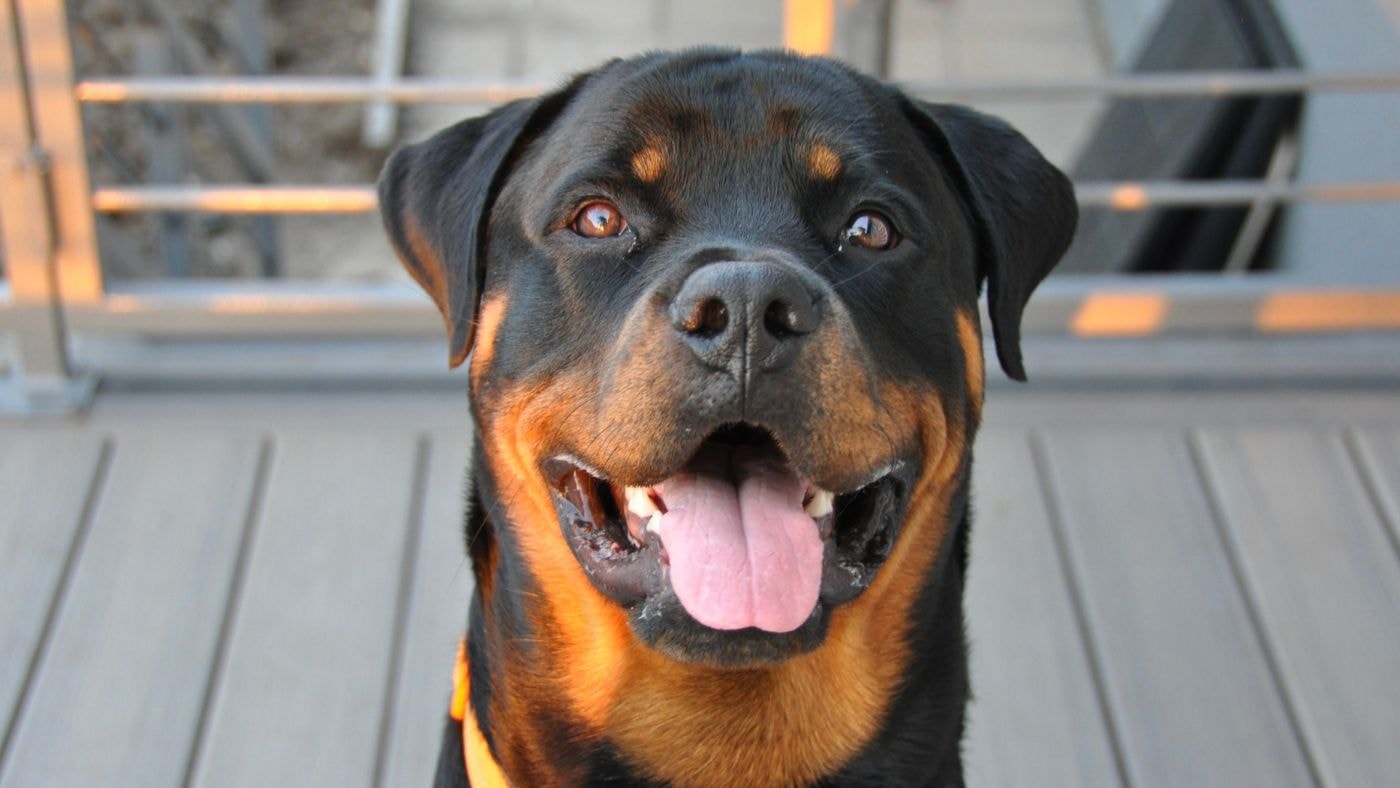
Beyond being a beloved family companion, the Rottweiler is still a top choice in police work, search and rescue, and therapy contexts. Their sharp noses make them adept at detection, while their robust frame helps in physically demanding tasks. Proper structure, excessive barking prevention, and socialization all influence how they perform in these crucial positions.
Social media abounds with videos of Rotties playing with kittens, demonstrating how a dog that once guarded livestock can also be the ideal buddy to other animals. Introduce them at a dog’s tail-wagging stage (puppyhood) for best results. They can grow into amazing ambassadors for the breed, showing skeptics just how gentle and happy rottweiler life can be.
Rottweiler Traits and Characteristics for Rottweiler Puppies
The Rottweiler is a dog breed known for loyalty, intelligence, and protective instincts—factors heavily influencing their day-to-day conduct. Owners should be aware of potential coat health issues, but more importantly, they need to manage any signs of aggression or tolerate hot weather challenges, ensuring each dog grows into a well-socialized adult.
Rottweilers’ Behavior with Family
Rottweilers are devoted, forging profound bonds with their families—sometimes focusing intensely on one or two members. This is one reason they may show high energy dogs traits when interacting with those they love. Keeping them engaged ensures they stay mentally stimulated and less prone to destructive behaviors involving other animals or objects in the home.
Their protective side makes them top-tier guard dogs, yet consistent socialization from a young age fosters balance. When introduced to new people, they can be reserved without being hostile. Setting boundaries, reinforcing good manners, and maintaining coat health help them become well-rounded adult dogs.
Rottweilers’ Behavior with Children
While Rottweilers are often gentle, precautions are necessary around small children. Their size alone can be intimidating, and even the friendliest Rottie needs supervision. As owners, you’ll want to ensure they can tolerate hot weather conditions if playing outdoors for extended periods, and that kids understand respectful boundaries.
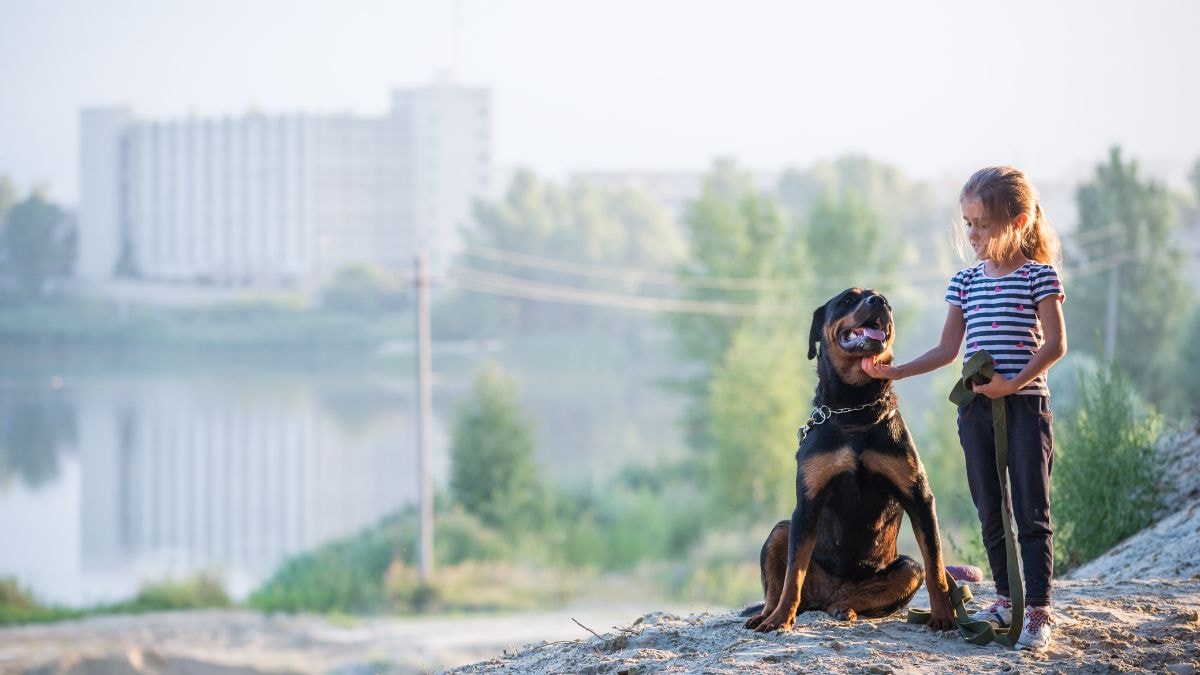
Generally, Rottweilers are patient and can grow to be protective playmates if the children are taught how to handle them calmly. These high energy dogs might bound around excitedly, so introducing them to structured activities—like walking in safe areas or visiting designated dog parks—can help them release pent-up energy and socialize positively.
Rottweiler’s Behavior with Other Dogs
Dominance can be part of a Rottweiler’s makeup. That said, many are sociable and flourish when given the chance to mingle with other animals. Early introductions and positive reinforcement are key. If your Rottweiler meets a new dog, do it slowly and in neutral territory to avert conflicts.
Having tan markings is the breed’s trademark, but it says little about their temperament. Some Rotties excel in multi-pet households; others may be more territorial. Monitor their interactions to avoid misunderstandings, especially if there’s a significant size or energy-level difference.
Puppy classes and group play can build confidence in your Rott puppy, staving off aggression or fear issues. This approach also lessens risks tied to hip dysplasia because controlled exercises help them develop strength in a healthy manner.
For potential owners, knowledge is power. Understanding your dog’s inherent traits—from their imposing frame to their affectionate nature—will help you guide them toward harmonious relationships. Many Rottweilers reach a healthy weight when given balanced meals, physical activities, and clear training.
Typically, they adapt better to dogs of the opposite sex, especially if raised together. Just be mindful that some bloodlines trace back to asian mastiffs, adding to their instinctive protectiveness.
Indeed, many rottweilers love being part of a canine community if introduced carefully. They can thrive in doggy daycares, on group walks, or with a new puppy in the household, provided that the environment is positive and structured.
Adaptability – Living Environments for Your Rottweiler
A Rottweiler thrives in an environment that provides space for movement, but they can also adapt to smaller living quarters if given enough daily exercise. Remember, they share history with small dogs that also had important tasks, so mental engagement is crucial. A yard is helpful but not mandatory. In any case, securing the property is vital to avoid escapes.
While many assume Rottweilers need acres of outdoor space, they can be content in apartments if you’re committed to daily exercise. Rottweilers good at adapting often do so because they bond closely with their humans. Keep them mentally stimulated, offer plenty of walks, and incorporate tasks and challenges. Doing so helps maintain their well-being regardless of home size.

Drooling in Rottweilers
Unlike some breeds, Rottweilers aren’t rampant droolers, especially if they have a tighter outer coat and well-structured jawlines. They might slobber after drinking or an intense play session, but generally, the drooling is manageable.
If you notice a sudden increase in drooling, consult your vet. It may indicate dental troubles or other health issues. Regular grooming and training tips (like positive reinforcement during tooth brushing) can help you identify any abnormalities quickly.
Trainability: A Rottweiler’s Aptitude for Learning
The Rottweiler temperament includes a strong work ethic, intelligence, and eagerness to please—qualities that bode well for teaching commands. Yet, newcomers might find them a handful at first. Setting up a structured dog home environment and introducing them to obedience drills early can cultivate an attentive, polite dog.
Positive reinforcement works best. Offer treats, verbal praise, or play sessions to reinforce desired behaviors. By doing this, you’ll have a more cooperative, happy rottweiler that views training as fun and rewarding.
Socializing them with people, animals, and varied environments from puppyhood is imperative. If you’re new to the breed, consider hiring a professional trainer who knows the nuances of Rottweiler schooling. This ensures your dog’s strengths are harnessed effectively.
Mental tasks—such as puzzle toys or short command sequences—are as vital as physical play. They keep these bright canines engaged, mitigate boredom, and reduce mischief. Balance brain games with exercise sessions for a satisfied, well-rounded dog.
Once properly trained, a Rottweiler’s capabilities expand to advanced obedience, agility, and beyond. Their inherited drive to collaborate with humans positions them as reliable partners in a variety of contexts.
Rottweiler Appearance – A Glimpse into This Popular Dog Breed
Rottweilers have a formidable, muscular frame coupled with a poised stance—attributes key to their heritage as police dogs or guard animals. Their build reveals a dog that’s agile yet strong, highlighting why they’re considered a popular dog breed.
General Appearance of a Rottweiler
A typical Rottweiler has a broad skull, clearly defined stop, and powerful jaws—traits bred for hard work. Their almond-shaped, dark eyes project an alert, attentive look. This can come across as imposing, but those who know the breed see the devotion beneath the surface.
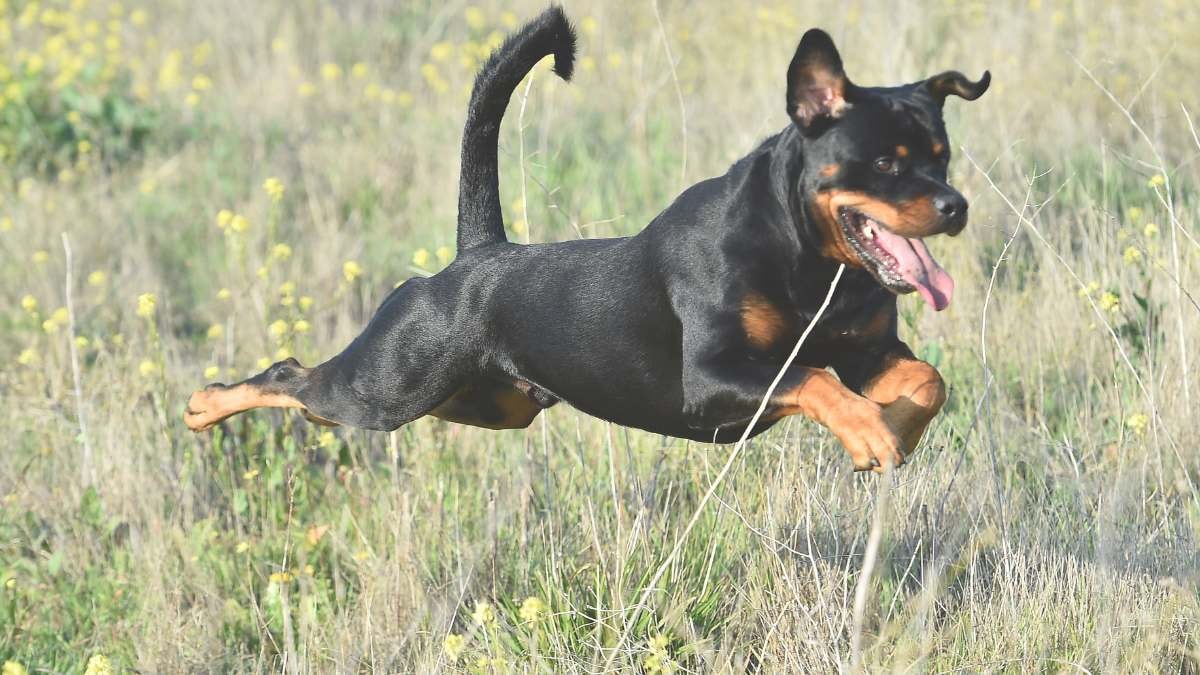
Medium-sized, flat ears and a straight back characterize their classic silhouette. In many regions, a dog’s tail is traditionally docked, though this practice varies globally. Regardless of tail status, their posture often signals confidence, a reflection of their working heritage.
Strong legs and well-developed shoulders point to a dog built for action. Whether pulling carts or on patrol duty, Rottweilers thrive when given mentally and physically stimulating tasks that match their robust physique.
Sporting a double coat—coarse outer layer and soft undercoat—this breed is relatively low maintenance when it comes to grooming. Rottweiler coats lie flat, but periodic brushing helps remove dead hair and keep the coat shiny. Their stamina and resilience also tie back to centuries of fulfilling labor-intensive assignments while balancing family companionship.
Color Shades of Rottweilers
Most Rottweilers have a black coat with tan markings (often referred to as mahogany or rust) highlighting their eyes, muzzle, chest, and legs. This iconic look sets them apart and aligns with breed standards emphasizing unmistakable markings.
These patches of color exemplify the Rottweiler’s heritage. While small white spots on the chest can occur, this trait is typically disfavored in show circles. Still, it doesn’t diminish their potential as a devoted companion.
You might come across atypical coats like “blue” or “red” Rottweilers, but these are rare and not recognized by most kennel clubs. Color does not affect the dog’s unwavering loyalty or trainability, so they remain excellent pets. Keep in mind that coat upkeep, from brushing to ensuring your Rottie can tolerate cold weather, is part of responsible ownership.
Rottweiler puppies may display lighter shades early on, but these generally deepen with age. Whether you have a pup with faint markings or a fully grown adult sporting a rich mahogany hue, their signature color palette garners well-deserved admiration. Embracing these unique features—from the rottweiler temperament to the hallmark coat patterns—reveals why this breed captures the hearts of so many.
Exercise and Grooming for Rottweilers
Every Rottweiler owner- or aspiring owner- knows that this is a breed full of energy and intelligence. Your Rottweiler puppy or adult dog is not just a pretty face; it needs both physical and mental stimulation to be at its best. Ensuring that your Rottweiler dog maintains its best health while also sporting a shiny, well-groomed coat is a responsibility every Rottweiler puppy owner should embrace. But again, don’t worry; the upkeep doesn’t require a Herculean effort; just a dedicated approach will do.
Exercising Needs for Rottweilers
Rottweilers are part of the Working Group and historically have been employed in physically demanding roles. This lineage means they’re a bundle of energy waiting to be spent. A good rule of thumb is to provide at least one or two hours of exercise per day. This can include walks, jogs, playtime in a fenced yard, and even some fetching games. You might also consider obedience training or agility courses to mix up things.
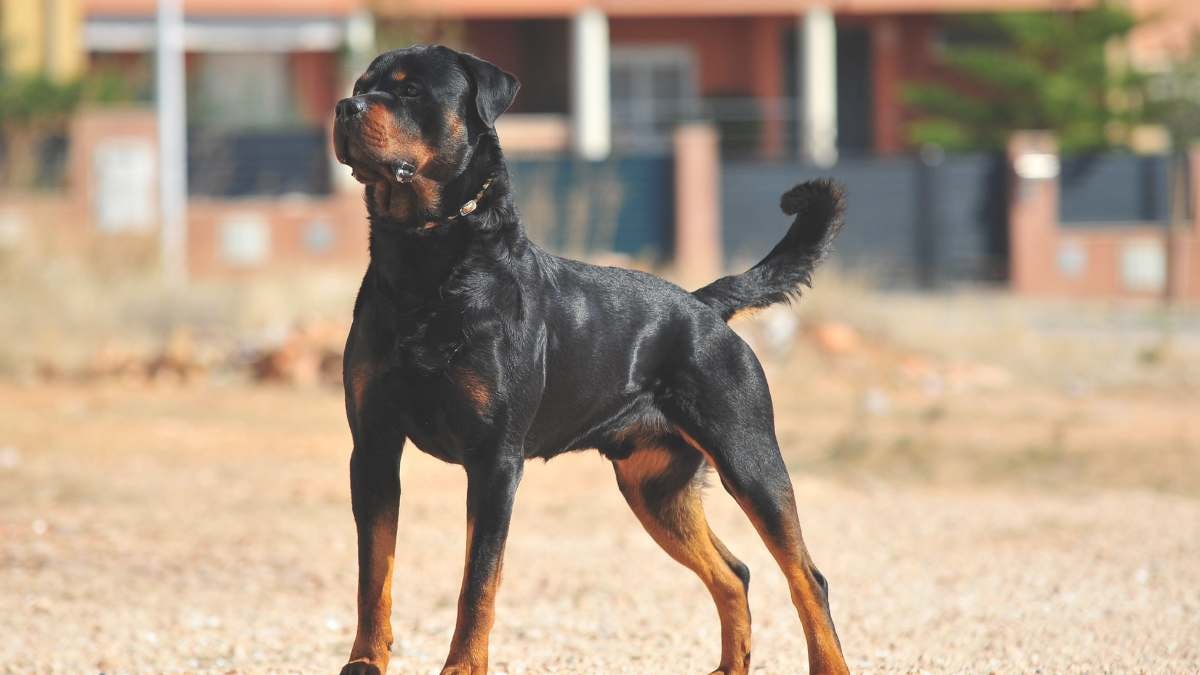
Without proper exercise, a Rottweiler can become bored, leading to unwanted behaviors. As a dog breed, Rottweiler enthusiasts would rightly point out that a tired Rott is a good Rott.
Shedding Cycles in Rottweilers
Surprisingly, for such a short-coated breed, Rottweilers are year-round shedders. While the shedding is on a moderate scale, you’ll find more hairs around your house during the shedding season, usually in the spring and fall.
To manage this, regular brushing is recommended, ideally two to three times a week. A de-shedding tool can also prove beneficial, along with some natural oils distributed throughout their coat. This routine not only reduces the hair lying around your home but also gives your Rottweiler puppies a gleaming shine.
Coat Grooming Routine for Rottweilers
Keeping your Rottweiler looking its best requires some effort, but it’s not overly complicated. They have short, dense coat that requires minimal grooming compared to longer-haired breeds. However, this doesn’t mean you can slack off. Bathing should be done once a month or when the Rott puppy gets into something particularly messy.
Always check for ticks and fleas during your grooming routine, especially if your pup spends a lot of time outdoors. Rottweilers have sensitive skin, so make sure to use a hypoallergenic, dog-specific shampoo.
Bathe your Rottweiler as needed, but not so often that you strip the oils from their coat, as these are essential for skin health. It’s vital to use a dog-specific shampoo that maintains the skin’s natural pH balance. Additionally, regular inspections of their nails, ears, and teeth should become a staple in your grooming routine, ensuring your Rottweiler remains the epitome of health.
Mental Stimulation Needs
Mental stimulation is as crucial as physical exercise. Rottweilers are intelligent and thrive when given tasks or puzzles. Toys like interactive feeders, puzzle toys, and Kong toys filled with treats can be excellent tools for keeping your dog engaged.

Obedience and agility training sessions also serve dual purposes; they mentally stimulate your dog and strengthen your bond with them. Remember, a mentally engaged Rottweiler temperament is less prone to destructive behavior and more likely to be a content, happy, and healthy member of your family.
NOTE: The information provided here should not replace professional veterinary advice. Consult your vet for breed-specific health recommendations.
Health of the Rottweiler: What Every Owner Needs to Know
Rottweilers are known for their robust physique, muscular build, keen protective instincts, and general hardiness. However, like any breed, they have their own set of health concerns that prospective and current owners should be aware of.
The well-being of a Rottweiler is paramount for dog enthusiasts and lovers, as a healthy dog not only promises longevity but also ensures quality of life.
Rottweiler’s Proneness to Potential Diseases
A Rottweiler’s stout build, though appealing, makes it prone to specific health challenges. Here are a few common health issues specific to the Rottweiler breed. Understanding these common health issues will enable you to take preventative measures and provide the best care possible for your Rottweiler.
- Hip and Elbow Dysplasia: This is a hereditary condition where the joints don’t develop correctly, which can lead to arthritis or potential lameness if left untreated. Rottweiler owners need to get their pets tested for this, especially if they’re considering breeding.
- Heart Problems: Like many large breeds, Rottweilers can suffer from heart problems like aortic stenosis, cardiomyopathy, and Von Willebrand’s Disease. Regular vet check-ups can catch these issues early.
- Gastrointestinal Issues: Bloat or gastric torsion is another issue Rottweilers are prone to, and this can be a life-threatening condition and requires immediate medical intervention. Familiarize yourself with the symptoms and have an emergency plan ready.
- Entropion and Other Eye Conditions: Entropion is an eye condition that Rottweilers are prone to where the eyelid rolls inwards, causing irritation. Other eye conditions that these dogs may suffer from can include progressive retinal atrophy. Again, knowledge of its symptoms and early diagnosis & treatment are crucial.
- Allergies: Many Rottweilers have skin allergies, which can often be managed through diet and environmental changes.
- Certain Cancers: Like many larger breeds, Rottweilers are more susceptible to bone cancer. Being vigilant about your dog’s health and ensuring regular vet check-ups can aid early detection.
In general, a diet high in quality protein and regular exercise can help in preventing many of these conditions. A proactive approach to your Rottweiler’s health, coupled with regular vet visits and an understanding of these potential ailments, can ensure your beloved pet remains by your side, healthy and vivacious, for many years.
NOTE: Always consult with a veterinarian for a proper diagnosis and treatment plan for your Rottweiler.

Variants Within the Rottweiler Breed
The Rottweiler, a breed with deep historical roots tracing back to the Roman Empire, has witnessed some variants, albeit not as many as certain other breeds. Generally, they are recognized as a singular breed without significant variants in size or coat type. However, there can be some differences based on their role and the region they originate from:
- German Rottweilers: These dogs are bred strictly according to the breed standard set by the Allgemeiner Deutscher Rottweiler Klub (ADRK) and are often considered the ‘original’ breed standard with its usual compact build.
- American Rottweilers: These dogs might have a slightly more extended body or lighter build, not always meeting ADRK standards, but are still robust and healthy, meeting the standards set by the American Kennel Club.
- Roman Rottweilers: This term is sometimes used to describe Rotties that are bulkier, perhaps reminiscent of the breed’s ancestors used to herd livestock in ancient Rome. However, it’s crucial to note that some argue there isn’t enough distinction to classify this as a separate variant; however, some breeders claim to specialize in these ‘Roman’ variants. Nevertheless, due to its exploitation, the term is considered more of a marketing term rather than a distinct subtype.
- Tailed vs tail Docked: In some regions, it’s more common to find Rottweilers with tails as docking is banned, such as Germany; however, in others, such as the United States, a docked tail is the norm.
- Show vs Work Lines: Some Rottweilers are bred primarily for the show ring, while others are bred for work such as herding or guarding. These roles may bring out slight differences in temperament and appearance.

While there may not be dramatic variations within the breed, each Rottweiler is unique and deserves love, attention, and care tailored to its individual needs. Understanding the common health issues and the minor variations within the breed can make you an even better Rottweiler parent. In all its forms, the Rottweiler remains a testament to loyalty, strength, and resilience. So whether you are inclined to the compact German variant or the slightly leaner American one, you’re bound to find a loyal companion in this beautiful breed.
Notable Individual Famous Rottweilers
The Rottweilers, one of the most recognized breeds worldwide, have made significant appearances in numerous sectors. These intelligent and versatile canines are famous in various realms, including the army, social media, and even films.
Here are some famous Rottweilers who have made a name for themselves:
- Max Von Stephanitz: Named after the founder of the German Shepherd breed, this Rottweiler served in the military as a messenger dog and gained high commendation for his service. Besides, the name itself belongs to a well-known individual (not a dog) who believed the Rottweiler was the ideal service dog and incorporated them into police service.
- Max: An award-winning Rottweiler from the UK that serves as a therapy dog. His story has been featured in multiple outlets, emphasizing the breed’s sensitive side.
- Jake the Rescue Rottweiler: A famous rescue Rottweiler who, after being saved from a burning shed as a puppy, became a search and rescue dog, assisting post 9/11.
- Jake the Rottweiler: A pet Rottweiler who protected his owner from sex offenders and was honored for his bravery and even equally praised among the people.
- Cesar: Famous in the army canine unit, Cesar received a bravery award for detecting explosives in a conflict zone.
- Spike: Spike is a popular Rottweiler known to be featured in several Hollywood movies, notably Alien (1992).
- Kali: Another famous service dog that served post 9/11 to help detect casualties and engaged in rigorous search and rescue operations.
- Ceaser: A PSD (Police Service Dog) member of the Edmonton Police Dog Unit who fought bravely during a shoot-out, saving victims, sacrificing his life to save them, as well as his assisting units.
- Axel: One of the most popular Rottweiler therapy dogs who has been a winner of the American Kennel Club Humane Fund Awards for Canine Excellence from New Jersey, USA.
- Rocky (Kent, England): He protected her owner from four armed thieves who broke into her house, capturing and subduing one of the intruders.
- Samantha (Orlando, Florida): A female Rottweiler who exhibited tremendous loyalty and companionship, never leaving the side of her 3-year-old owner’s kid, protecting him from the wild and the cold till they got found.
- The Last Dog of Rottweil: Rottweil, the place that gave this breed its name, has an interesting story behind it. The townspeople had a single female dog named Rottweil, which they carefully bred, creating the signature Rottweilers that we see today.
Interesting Facts Related to Rottweilers
Rottweilers are a breed full of surprises and fascinating facts. Whether you’re a Rottweiler owner or a dog enthusiast considering a Rott puppy, here are some interesting facts about this remarkable breed.

- Roman Heritage: Rottweilers are among the older herding breeds, with their history tracing back to Roman times.
- Multifaceted Workers: Rottweilers were initially used to herd livestock and pull carts for butchers; they are utility dogs through and through and are being used actively as police dogs, guide dogs, therapy dogs, and even search and rescue missions.
- Strong Jaws: A Rottweiler’s bit force is among the strongest of all dog breeds, coming in at over 300 pounds of pressure.
- High IQ: These dogs are ranked among the top 10 for intelligence among dog breeds, according to Dr. Stanley Coren’s “The Intelligence of Dogs,” ranking Rottweilers at number 9.
- Water Lovers: Rottweilers are excellent swimmers and enjoy swimming.
- Gentle Giants: Rottweilers, despite their robust appearance, often think they are lap dogs and will try to snuggle with their owners whenever they get a chance.
- Swiss Connections: The breed is named after the German town of Rottweil, which was a Roman settlement.
- Social Creatures: Properly trained and socialized Rottweilers can get along well with other pets, including cats.
- Quick Learners: Rottweilers can learn a new command in just a few repetitions, making them highly trainable, provided you use the proper techniques.
- Guardian Instinct: Naturally protective, the Rottweilers are known to stand between their owner and a stranger, ensuring their family’s safety.
- Celebrity Status: Apart from movies, Rottweilers have made appearances in songs by famous artists like Elvis Presley.
- Sensitive Souls: Though they look tough, Rottweilers are known for being sensitive and can experience separation anxiety.
- Famous Pooch: In the US, the Rottweiler dog breed consistently ranks as one of the most popular dogs by the American Kennel Club.
In essence, whether you’re looking for a companion, protector, or simply a furry friend, the Rottweiler dog has proven its worth in more ways than one. Their rich history and diverse talents make them an exciting choice for dog enthusiasts and casual owners alike.
Characteristics of an Ideal Human to Own a Rottweiler
As with every dog breed, there are specific attributes in an owner that bring out the best in a Rottweiler. If you’re keen on owning a Rottweiler or just curious about the breed, it’s crucial to understand the lifestyle and experience level ideally suited for this canine companion.
The Kind of Lifestyle Suitable for Owning a Rottweiler
Owning a Rottweiler isn’t just a whim; it’s a lifestyle choice that requires careful consideration. This breed is best suited to families or individuals who lead an active lifestyle and can dedicate time to exercise, training, and socializing.
Whether you’re looking for a dog, breed Rottweiler, or have come across adorable Rottweiler puppies, understanding the breed’s needs is essential.
- Active and Engaging: If your lifestyle leans more towards Netflix marathons and limited physical activity, a Rottweiler may not be the best fit for you. These dogs thrive in environments where they can engage both mentally and physically. They love walks, runs, and interactive play sessions. Their ideal human is someone who enjoys outdoor activities and can provide them with daily exercise.
- Space: While a Rottweiler dog is adaptable, they do enjoy open spaces where they can roam, play, and guard. A home with a backyard or proximity to parks is beneficial, though not mandatory. What’s essential is the quality of exercise and engagement they get.
- Routine-Oriented: Rottweilers appreciate a structured routine. Regular meal times, exercise schedules, and training sessions help them feel secure and well-balanced.
- Dedicated Time for Training: Whether you’re bringing home a Rott puppy or an adult, training and socialization are crucial. An ideal owner will carve out dedicated time to train their Rottweiler, ensuring they grow to be well-mannered and sociable.

How Experienced an Owner Should be to Own a Rottweiler
Experience level is another crucial factor in determining if a Rottweiler is suitable for you. While they are intelligent and eager to please, their firm will and protective nature require an owner who can establish themselves as the pack leader. If you’re a first-time dog owner, a Rottweiler might not be the best fit for you unless you are willing to invest your time pushing efforts to get along with your companion and with the right approach or unless you are willing to invest in professional training classes.
Let’s dive into the experience spectrum:
- Prior Dog Ownership: It’s beneficial if the prospective Rottweiler owner has had prior experience with dogs. Understanding basic dog behaviors and training methods can make the transition smoother.
- Understanding the Breed: While every Rottweiler is unique, some common traits that define the breed do exist. Knowledge about their natural guarding instinct, the Rottweiler temperament, their strength, and sometimes stubbornness can prepare an owner better.
- Training Knowledge: Rottweilers are highly trainable, but they respect firm, consistent, and kind leadership. An owner who understands positive reinforcement techniques and can set clear boundaries will find it easier to manage and train their Rottweiler.
- Seeking Professional Help: If you’re inexperienced but committed to owning a Rottweiler, there’s no harm in seeking professional training help. Sometimes, guidance from experts can bridge the experience gap and ensure your Rottweiler grows into a well-adjusted adult.
If you are an active individual or family with some dog-handling experience and a lot of love to give, a Rottweiler might just be your perfect match! Remember, owning a Rottweiler, or any dog, for that matter – is a long-term commitment that should not be taken lightly. Do your research, assess your lifestyle, and make sure you’re ready for the rewarding challenge of owning one of these beautiful animals.
When Is the Right Time to Get A Rottweiler?
If you’ve ever found yourself searching for terms like “Rottweiler,” “dog breed Rottweiler,” or “Rottweiler puppies,” chances are you’ve been captivated by the idea of owning one of these majestic creatures. Deciding the right time to bring a Rottweiler into your life is crucial. Whether you’re interested in Rottweiler puppies or adopting an older dog, these canines bring a unique blend of loyalty and strength to your household. Several factors help decide when it’s the right time to bring home one.
Your Lifestyle
If your lifestyle involves long work hours and minimal time at home, a Rottweiler may not be the best fit. They thrive in environments where they can interact and work. So, if you are in a stable period of your life without anticipating major upheavals or relocations, it could be the perfect time to welcome this breed into your home.
Family Dynamics
If you have young children or other pets, it’s essential to consider how a Rottweiler will fit into your family dynamic. They can be excellent with children and other dogs if well-socialized, but it’s always better to be prepared. They’re enormous and sometimes unaware of their own strength, so supervision is advised with more minor children.
Living Space
While Rottweilers are adaptable to varying living spaces, including apartments, they do best when there’s a yard or open space for them to run around in. Before getting a Rott, assess your living situation.
Time and Attention
Rottweilers thrive on human interaction and are pretty loyal to their families. Ensure that your work schedule allows you to spend quality time with your pet, as neglect can lead to behavioral issues.
Pet Health and Financial Considerations
Rottweilers are prone to specific health issues that can require medical attention. Besides, they can be exuberant and physically demanding, so make sure you’re financially ready for vet visits, quality food, possible pet insurance, and other care requirements like grooming and toys for mental stimulation.
Experience Level
Rottweilers are trainable but require an owner who can assert leadership and consistency. If you’re new to dog ownership, make sure to do thorough research or even consider dog obedience classes.
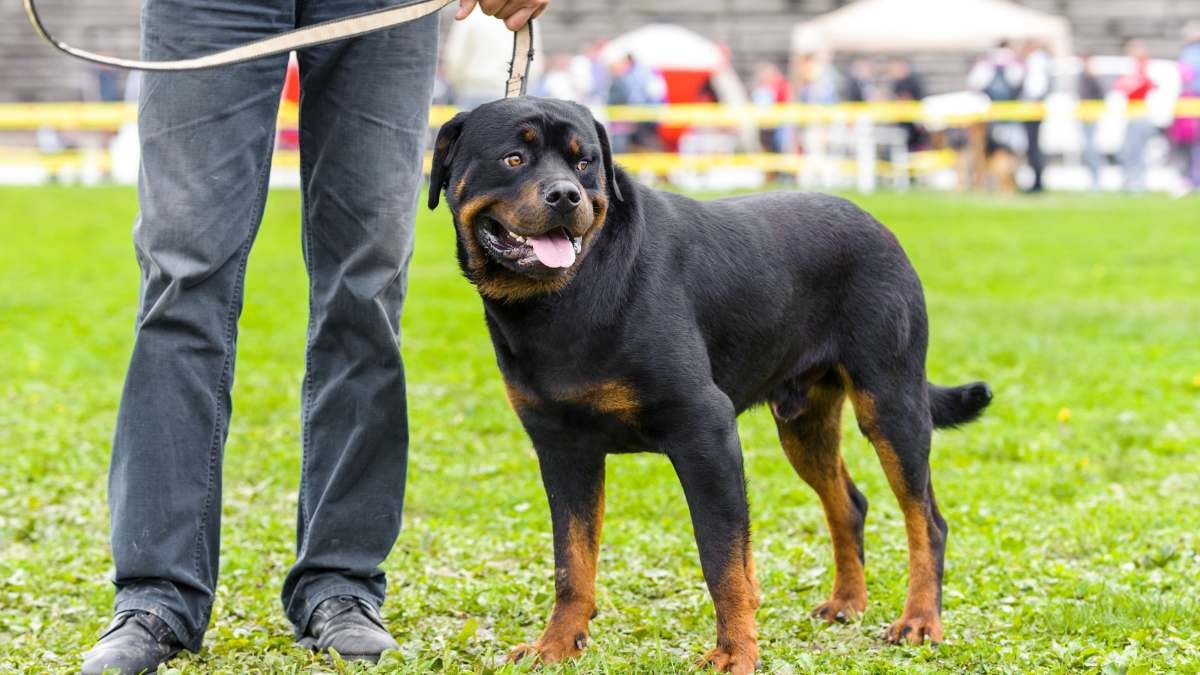
Unleashing the Truth: Is a Rottweiler Your Perfect Match?
After diving deep into the world of Rottweilers, from their history and shared characteristics to their trainability and health, it’s time to ask the big question: Is a Rottweiler the right match for you?
If you’re someone who has an active lifestyle, ample space, and a love for large, loyal dogs, then a Rottweiler could be your ideal companion. With their strong sense of family loyalty, they’re great for families with children as long as proper supervision is ensured. Their trainability also makes them a good pick for those interested in a dog that can serve multiple roles, from a family pet to a security dog.
On the other hand, if you’re frequently on the move or live in a compact space without much room for play and exercise, a Rottweiler may not be the best fit. Their activity requirements can be a challenge in such a case to fulfill their physical and mental stimulation needs.
This breed isn’t for everyone. If you’re a first-time dog owner, or if you can’t commit the time and resources needed for their exercise and mental stimulation needs, then this breed may not be ideal.
In your journey of understanding this breed, the common searches of the terms “Rottweiler temperament” and “Rott Puppy” are just the start. Every dog is unique, and while breed traits do play a role, individual personalities can vary.
To truly understand if a Rottweiler is the right breed for you, spend time with them. Volunteer at shelters, meet breeders or spend a day with a friend who owns one. This hands-on experience will give you a clearer picture of what life with a Rottweiler looks like. After all, as the saying goes, “A dog is for life, not just for Christmas.”
And who knows? Maybe you’ll be the lucky owner of one of the future famous Rottweilers, making headlines for their bravery, intelligence, or adorable antics.
Your perfect canine companion is out there, and if all stars align, it just might be a Rottweiler!

